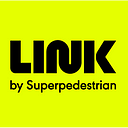Five things we’ve learned as our scooters arrive in their 30th city
Vienna is now home to Superpedestrian’s 30th fleet of shared LINK e-scooters, just 10 months after launching our shared mobility division. Here are some key lessons we’ve learned along the way.
“City number thirty,” says Avra van der Zee, VP of Strategy at Superpedestrian. “That’s thirty cities that have entrusted us with the safety of their citizens and public spaces. It’s truly humbling.”
In July 2020, Superpedestrian decided to transform a single-city e-scooter road testing program into a fully-fledged shared mobility division. By December of that year, we were operating our proprietary shared micro-electric vehicle, LINK — the world’s smartest and safest e-scooter — in nine cities across the US, Spain and Italy.
Just a few weeks later, in April 2021, our high-tech, safety yellow scooters began rolling out in Vienna, Austria. Vienna is our 30th shared fleet, in our fourth country, and on course to be our largest European fleet. All of this growth has happened in just 10 months.
Here are five lessons we’ve learned (or relearned) along the way.
1. People really matter
Tech titan Steve Jobs famously said: “It doesn’t make sense to hire smart people and then tell them what to do; we hire smart people so they can tell us what to do,”
As a transportation robotics company, Superpedestrian has always relied on highly-skilled, imaginative engineers, designers and manufacturing staff. Now that we are also a service business, our commitment to this approach is stronger than ever.
“Our success hinges on the vision, dexterity and agility of our people,” comments William Knapp, VP (Operations) at Superpedestrian. “We have only been able to accelerate our growth in such a major way by attracting the right individuals for the right jobs.”
2. Think global, hire local
Our Vienna fleet is managed by Laurenz Vavrovsky, who was born and raised in the city. He holds a degree from the Vienna University of Economics and Business and speaks four languages (including German and English).
His local knowledge, entrepreneurial flair and forensic focus on matters such as street safety and parking zones has set our Vienna program for success from the start.
“I love my city, and I believe that Vienna deserves the best service and the best technology when it comes to micromobility,” says Laurenz. “That’s why I’m so proud that Superpedestrian has chosen to come here.We make the Rolls Royce of e-scooters and Viennese communities deserve nothing less.”
3. Technology speaks for itself
To many cities, the micromobility explosion feels like the second coming of the Dot Com bubble. The field is crowded with start-ups, all with fashionably short names, the Uber mindset and identical, off-the-shelf vehicles. Flimsy scooters are as widespread as gaudy pop-up banner adverts once were.
When we launched our first city, we did so without fanfare. Although LINK is no ordinary vehicle, we didn’t want to ride the hype train bound for Investor-ville. We wanted cities to judge us on our substance, not our style.
“We spent years in the test lab, to the tune of $75m, before ever putting a scooter wheel on the ground in a city,” explains Graham Gullans, VP (Partnerships) at Superpedestrian. “We believe that community safety starts with the tech inside the scooter itself, and it’s been reassuring to find that more and more cities agree with us.”
Vienna already has more than 500 LINK scooters serving residents, with another 500 arriving later in the month. The fleet will increase soon after to total 1,500 scooters.
“Just step onto our scooter once and you’ll see how much time and money has been invested in making this the best vehicle of its type,” Laurenz says. ““LINK is seriously high-tech. It has LED lights, triple-braking system, autonomous diagnostics, tip-over detection, and 1,000 vehicle health checks every second. Viennese people are loving this scooter and it’s showing in our strong fleet usage.”
4. Do your homework
Technology is nothing without the appropriate application.
We tailor our service to every place we serve, whether it’s a one-horse-town or a bustling metropolis. That means doing plenty of homework, so that our fleets can best serve residents across all neighborhoods.
The vast experience of our operations, community safety, data insights and urban planning teams has really helped here. Our tools and insights stretch back to 2007, thanks to our acquisition of mobility pioneer Zagster, and our staff includes three MIT-trained urban planners.
Cities have taken note. We’re now serving communities large and small. Headline destinations include Austin, Madrid, Turin, Rome, San Diego and Seattle, but we’re also proudly helping to connect citizens in more modestly-sized towns, including Aprilia (Italy), Alcalá de Henares (Spain) and Hartford, Connecticut (USA).
Importantly, we’ve never launched in a city without permission, and we’ve never had our service suspended or revoked for contravening city regulations. Homework pays off.
5. Smart cities deserve smart scooters
Vienna topped a study into smart city strategies that analysed 153 different cities across the world. (The Austrian capital pushed London, UK, into second place.)
It’s no surprise to learn that Vienna has well-developed public transport networks, with more than 50% of the entire population using these systems (pre-Covid).
“Vienna was the obvious choice for our 30th fleet,” says Haya Verwoord Douidri, VP (EMEA) at Superpedestrian. “Vienna is serious about smart city strategy, which can be supported by clean, on-demand personal transportation. Our hyper-intelligent micro-electric vehicle, with its roots at MIT and its portal to expansive data sets, is perfectly suited to helping the city reach its ambitious goals.”
We’re as proud to serve in Vienna as we are every one of our other cities. Stay tuned for the next 30!
Did you know?
- The smallest location we serve: Manhattan, Kansas (US), with 55,000 residents
- And the largest: Madrid (Spain), at more than 3 million inhabitants
- Our largest region: North America, where we operate 60% of our shared fleets
